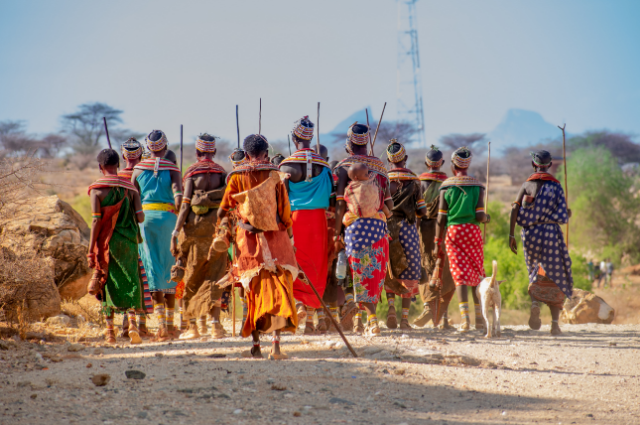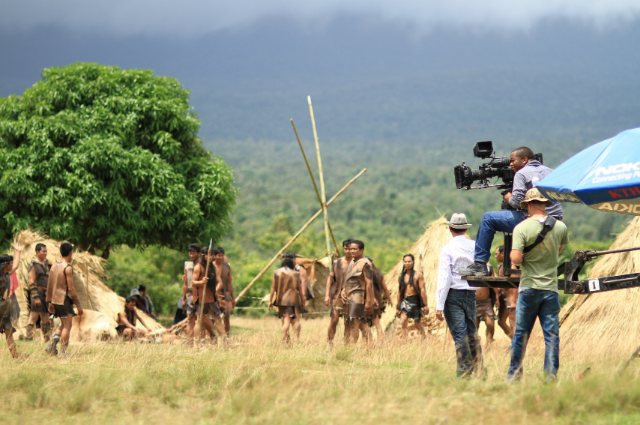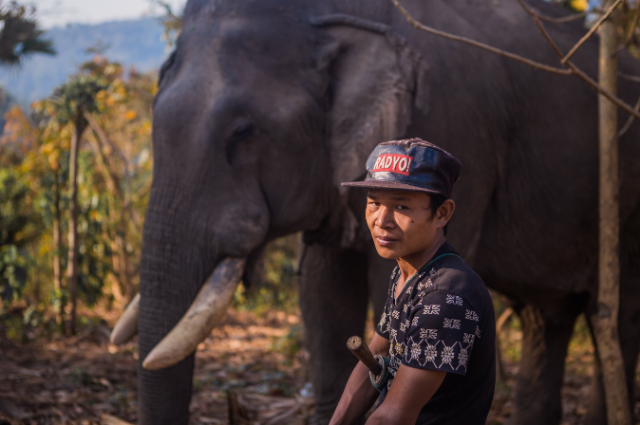
Image Source: by Anne Nygård on Unsplash
INTRODUCTION:
Globalization is a multifaceted phenomenon that encompasses economic, social, and cultural integration on a global scale. It is driven by advancements in technology, transportation, and communication, enabling the seamless flow of information, trade, and capital across national boundaries. While globalization promises economic growth and access to new opportunities, it also presents a formidable challenge to the preservation and protection of indigenous cultures.
- Impact on Indigenous Cultures:
At the heart of the clash between globalization and indigenous cultures lies the erosion of cultural identity. Globalized markets and consumerism tend to favor homogenization, promoting dominant mainstream cultures while marginalizing indigenous practices. As indigenous communities become increasingly exposed to global influences, their unique languages, customs, and traditions face the risk of being lost forever.
One of the most profound impacts of globalization is the economic challenge faced by indigenous communities. Traditional subsistence economies, deeply rooted in sustainable practices and local ecosystems, struggle to compete with globalized industries. Indigenous peoples often find themselves on the margins of economic progress, facing limited access to resources, limited employment opportunities, and a widening wealth gap.
Furthermore, the environmental impact of globalization exacerbates the vulnerability of indigenous cultures. As multinational corporations seek to exploit natural resources, indigenous lands, and territories face encroachment, deforestation, and pollution. These detrimental activities not only disrupt the delicate balance between indigenous communities and their environment, but also sever their sacred and spiritual connections to the land.
GLOBALIZATION'S TOLL ON INDIGENOUS CULTURES:
STRUGGLING TO PRESERVE IDENTITY, LIVELIHOODS, AND LAND

In an increasingly interconnected world, the pervasive reach of globalization has left a few corners untouched. While this phenomenon has brought undeniable progress and economic growth, its effects on indigenous cultures have been nothing short of devastating. From the loss of cultural identity to economic challenges and environmental degradation, globalization has cast a long shadow over the survival of ancient traditions and communities.
- Loss of cultural identity: A fundamental casualty of globalization is the erosion of indigenous languages, customs, and traditions – the very essence of cultural identity. With the influx of dominant global cultures, indigenous communities find themselves caught between the waves of modernization and the preservation of their age-old heritage. As young generations embrace the allure of globalized lifestyles, the invaluable knowledge and wisdom handed down through generations face the risk of fading into oblivion.
- Economic challenges: Moreover, the economic challenges inflicted by globalization have disproportionately affected indigenous communities, marginalizing their livelihoods and disrupting their traditional practices. As markets open up to global competition, indigenous artisans, farmers, and craftsmen find themselves ill-equipped to navigate the demands and standards imposed by a fast-paced, profit-driven world. The once-thriving local economies, deeply rooted in sustainable practices and community interdependence, are now grappling with the pressures of globalization, pushing these communities to the fringes of society.
- Environmental impact: In addition to economic struggles, the environmental impact of globalization has been acutely felt by indigenous communities. As multinational corporations exploit natural resources with little regard for sustainability or respect for indigenous territories, the delicate balance between humanity and nature is disrupted. The land that has long sustained indigenous communities, both physically and spiritually, falls victim to deforestation, pollution, and ecological degradation, posing a threat to their traditional ways of life.
As the world hurtles forward on the wheels of globalization, it is crucial to remember that our collective progress must not come at the expense of ancient cultures and their irreplaceable wisdom. By acknowledging the loss of cultural identity, economic challenges, and environmental impact brought about by globalization, we can forge a path that embraces diversity, inclusivity, and the preservation of indigenous cultures. It is through this collective effort that we can create a truly enriched and harmonious global community.
GLOBALIZATION'S IMPACT ON INDIGENOUS CULTURES:
EXAMINING THE MAASAI OF AFRICA AND THE INUIT OF THE ARCTIC:
- The Maasai of Africa:
The Maasai people, renowned for their distinctive customs and deep connection to the land, have long inhabited the grasslands of East Africa. However, globalization has cast a shadow on their traditional way of life, leaving them vulnerable to numerous challenges.
One of the most pressing issues confronting the Maasai is the encroachment of modern infrastructure and commercial development. As globalization brings urbanization and economic expansion to Africa, Maasai lands are increasingly coveted for their resources and potential for tourism. This has led to land disputes and forced displacements, disrupting the Maasai's age-old pastoral practices and connection to their ancestral territories.
Additionally, globalization's influence has reached into the heart of Maasai communities, eroding their cultural identity. Modern education systems, often driven by Western ideals, have limited the transmission of traditional knowledge and language. As young Maasai individuals seek economic opportunities beyond their homelands, traditional practices such as beadwork, livestock herding, and oral storytelling are fading, endangering the unique Maasai heritage.
- The Inuit of the Arctic:
In the vast Arctic region, the Inuit people have endured the harsh conditions of their environment for generations. However, the forces of globalization have disrupted their way of life, presenting them with a set of distinct challenges.
One of the most profound challenges faced by the Inuit is climate change. The Arctic region is experiencing the fastest rates of warming, threatening the ice and ecosystems on which the Inuit rely for survival. As ice melts and traditional hunting grounds become inaccessible, the Inuit is confronted with food insecurity, economic instability, and a profound loss of their cultural practices intricately tied to the Arctic environment.
Furthermore, the integration of the Inuit into global market systems has had far-reaching effects on their cultural identity. The penetration of Western consumer culture and reliance on imported goods has eroded traditional skills such as hunting, fishing, and crafting. The rise of technology and digital connectivity has brought both opportunities and challenges, as Inuit youth grapple with balancing their ancestral traditions with the lure of globalized digital platforms.
UNVEILING THE UNIQUE KNOWLEDGE AND CULTURAL DIVERSITY THAT INDIGENOUS COMMUNITIES OFFER

In a world increasingly shaped by globalization, the invaluable contributions of indigenous cultures often find themselves overlooked amidst the rapid pace of change. However, beneath the layers of modernity lies a rich tapestry of wisdom, perspectives, and knowledge that indigenous communities bring to humanity. Recognizing the importance of cultural diversity and the preservation of indigenous traditions becomes not just a matter of heritage, but a crucial endeavor for future generations..
Indigenous cultures, deeply rooted in their lands and ancestral wisdom, possess a unique understanding of the natural world. Through centuries of harmonious coexistence, these communities have developed an intricate web of knowledge, passed down through generations, that offers profound insights into sustainable practices, medicinal plants, and alternative ways of life. Their deep connection to the environment provides a blueprint for addressing the pressing environmental challenges faced by our global society.
Take, for instance, the Inuit people of the Arctic. Their ancestral knowledge of ice patterns, wildlife migration, and weather patterns has proven invaluable for understanding the impacts of climate change. With their traditional knowledge, they offer a nuanced understanding of the changing Arctic landscape, allowing us to adapt and mitigate the effects of this environmental crisis.
Cultural diversity, which is intricately tied to the preservation of indigenous traditions, acts as a wellspring of human creativity and innovation. Indigenous cultures challenge our preconceived notions and open doors to alternative perspectives. They remind us that there is no single path to progress or a uniform definition of success. Cultural diversity fuels the human imagination, encourages critical thinking, and fosters empathy and understanding.
By preserving indigenous traditions, we ensure that future generations inherit a world enriched with a mosaic of cultural expressions. These traditions, woven into every aspect of daily life, teach valuable lessons about community, respect for elders, and sustainable practices. They cultivate a sense of identity and belonging, anchoring individuals in their roots while empowering them to navigate an ever-changing world.
However, the challenges faced by indigenous cultures in the wake of globalization cannot be understated. Rampant cultural appropriation forced assimilation, and the erosion of traditional languages threaten to erase centuries of wisdom and heritage. To safeguard this irreplaceable treasure trove, collective action is imperative.
The preservation of indigenous cultures transcends mere nostalgia or sentimentality. It is an investment in the collective future of humanity. By embracing the unique knowledge, wisdom, and perspectives that indigenous cultures offer, we unlock a world of untapped potential. Let us recognize the urgency of preserving cultural diversity and pledge ourselves to protect the invaluable heritage that indigenous communities gift us, ensuring a vibrant and inclusive legacy for generations to come.
SAFEGUARDING INDIGENOUS CULTURES:
STRATEGIES TO PRESERVE RICH TRADITIONS AMID GLOBALIZATION
In an increasingly interconnected world, the impact of globalization on indigenous cultures cannot be overlooked. The assimilative wave of globalization poses a significant threat to the unique traditions, languages, and identities of indigenous communities. However, amidst this challenge, efforts are being made to protect and preserve these rich cultures. Let us explore some methods employed to safeguard the invaluable heritage of indigenous peoples from the sweeping tide of globalization.
1. Cultural Education and Awareness:
Education serves as a powerful tool in nurturing and sustaining indigenous cultures. By incorporating indigenous history, languages, and traditions into mainstream educational curricula, we can ensure that younger generations understand and appreciate their cultural roots. Establishing cultural exchange programs, workshops, and community-driven initiatives can foster pride and awareness among indigenous youth, allowing them to become torchbearers of their traditions.
2. Legal Protection and Recognition:
Recognizing the rights and knowledge systems of indigenous communities is crucial in the battle against cultural erosion. Governments and international bodies must develop legal frameworks that safeguard indigenous intellectual property, cultural heritage, and sacred sites. This includes protecting traditional ecological knowledge, indigenous art forms, and folklore. Empowering indigenous communities through legal protection grants them agency over their cultural resources and ensures their long-term preservation.
3. Sustainable Development and Community Empowerment:
Preserving indigenous cultures goes hand in hand with sustainable development practices. Encouraging eco-friendly economic initiatives that align with indigenous values can protect their lands and natural resources from exploitation. Community-led enterprises, such as ethically sourced handicrafts, ecotourism, and sustainable agriculture, provide alternative livelihoods while upholding traditional practices. By involving indigenous communities in decision-making processes, their deep-rooted wisdom can contribute to a more balanced and harmonious approach to development.
4. Collaborative Partnerships and Knowledge Sharing:
Creating collaborative partnerships between indigenous communities, governments, non-governmental organizations (NGOs), and international institutions is essential. These partnerships can foster knowledge exchange, resource-sharing, and capacity-building initiatives. Indigenous peoples possess valuable traditional knowledge that can contribute to various fields such as medicine, agriculture, and environmental conservation. Encouraging dialogue, cultural exchanges, and intercultural understanding, facilitates mutual learning and appreciation.
Conclusion:
As globalization continues to reshape the world, it is imperative to protect and preserve the cultural tapestry woven by indigenous communities. Through strategic approaches like cultural education, legal protection, sustainable development, and collaborative partnerships, we can safeguard indigenous cultures from the homogenizing effects of globalization. Each effort to preserve their traditions is a testament to the diversity and resilience of humanity, ensuring that the rich heritage of indigenous peoples endures for generations to come. Let us rally together in support of these methods and celebrate the vibrant tapestry of indigenous cultures worldwide.

